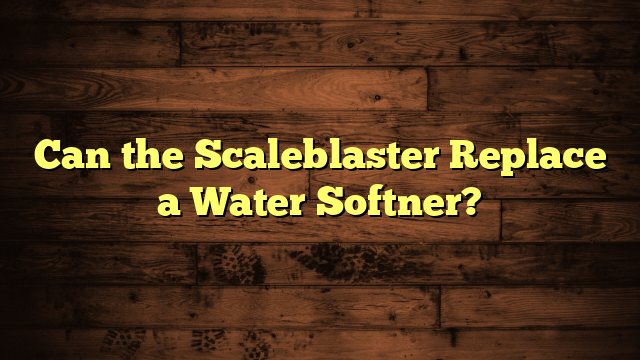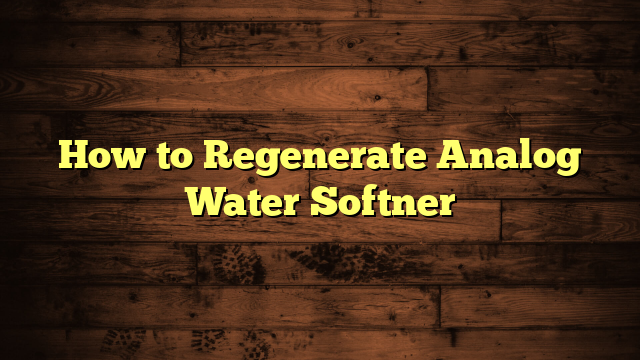What Things You Need in a Water Softner?
When you're evaluating a water softener, it's important to think about several key factors that can impact your decision. You need to assess the hardness of your water and determine the right system size for your household's needs. Choosing the right type of softener, such as a salt-based ion exchange system, is essential, but it doesn't stop there. You'll also want to reflect on drainage options and maintenance requirements. What else could greatly affect your choice? Let's explore further to guarantee you make the most informed decision.
Key Takeaways
- Determine your water hardness level to select the appropriate softener type and capacity.
- Ensure adequate space for installation and maintenance access around the softener unit.
- Choose a reliable drainage method for excess water disposal, complying with local plumbing codes.
- Implement a preventive maintenance schedule, including regular checks of salt levels and system components.
- Consider the total cost, including unit price, installation fees, ongoing maintenance, and warranty options.
Understanding Water Hardness
Understanding the hardness of your water is essential, as it directly impacts your daily life and the efficiency of your appliances. Water quality can vary greatly based on the mineral content, particularly calcium and magnesium, which contribute to hardness.
Hard water can lead to several hardness effects that disrupt your routine. For instance, you might notice soap scum buildup on your dishes and bathroom surfaces, making cleaning more tedious. Moreover, hard water can cause scale buildup in pipes and appliances, reducing their lifespan and efficiency. Your water heater, dishwasher, and washing machine may work harder, leading to increased energy bills and potential repairs.
Furthermore, hard water can affect your skin and hair, causing dryness and irritation. If you've ever felt that your soap didn't lather well or your clothes seemed dingy after washing, it's likely due to water hardness.
Understanding these hardness effects allows you to make informed decisions about water treatment options, ensuring better water quality in your home. By addressing water hardness proactively, you can improve not only your appliances' performance but also your overall comfort and health.
Types of Water Softeners
When it comes to selecting a water softener, you'll find several types designed to tackle hard water issues effectively. The most common option is salt-based systems, which use a process called ion exchange. In these systems, hard water minerals, like calcium and magnesium, are replaced with sodium ions. This method is highly effective and widely used in residential settings.
Another option is magnetic softeners, which claim to reduce hardness by creating a magnetic field around the water pipes. This process is said to alter the behavior of calcium and magnesium, reducing their ability to form scale.
While magnetic softeners are often marketed as a maintenance-free solution, their effectiveness can vary widely based on water conditions and may not deliver results comparable to traditional salt-based systems.
You should also consider dual-tank systems, which allow for continuous soft water supply, and electronic softeners, which use advanced technology for ion exchange.
Each type has its advantages and disadvantages, so understanding these differences will help you choose the best solution for your specific needs.
Key Features to Consider
When selecting a water softener, you need to take into account your water hardness level and the type of regeneration process it uses.
Understanding these key features will help you choose a system that effectively meets your needs.
Be sure to evaluate both aspects to guarantee ideal performance and efficiency.
Water Hardness Level
Evaluating your water hardness level is essential for determining the right water softener for your needs. To start, you should conduct water hardness testing, which will measure the concentration of calcium and magnesium ions in your water supply. These minerals contribute to water hardness, and understanding their levels will help you choose an appropriate softener capable of effective hardness reduction.
Here's a quick guide to common water hardness levels:
| Hardness Level (mg/L) | Description | Softener Recommendation |
|---|---|---|
| 0 – 60 | Soft | Basic water softener |
| 61 – 120 | Moderately Hard | Standard water softener |
| 121 – 180 | Hard | High-capacity softener |
| 181+ | Very Hard | Specialized softening system |
Regeneration Process Type
Understanding your water hardness level sets the stage for selecting the right regeneration process type for your water softener. The regeneration process is essential, as it directly impacts how efficiently your system operates and how often it needs to regenerate.
You've typically got two main regeneration methods to choose from: time-initiated and demand-initiated regeneration.
Time-initiated regeneration operates on a set schedule, regardless of your actual water usage. If your household has consistent water usage, this method can be convenient. However, it may lead to unnecessary cycles, especially during periods of low demand, increasing your salt and water usage.
On the other hand, demand-initiated regeneration activates based on your actual water consumption. This method is more efficient as it adjusts the regeneration frequency to match your needs, minimizing waste. If you're often using varying amounts of water, this might be the better choice.
Ultimately, understanding these regeneration methods and their implications helps you select a water softener that best suits your lifestyle, ensuring ideal performance and cost-effectiveness.
Make sure to evaluate your household's water usage patterns before making a decision.
System Size and Capacity
Choosing the right system size and capacity for your water softener is essential for ideal performance. System efficiency hinges on having a unit that meets your household's specific capacity requirements.
To determine the appropriate size, consider your water usage patterns, the number of occupants in your home, and the hardness level of your water supply.
Start by estimating your daily water consumption in gallons. A general rule of thumb is that each person uses around 80 to 100 gallons per day.
Next, assess the hardness of your water, typically measured in grains per gallon (gpg). Multiply your daily water usage by the hardness level to find your total daily softening requirement.
Based on this information, select a water softener with a capacity that can handle your needs. Systems usually have capacities ranging from 24,000 to 80,000 grains.
Choosing a unit that exceeds your calculated requirements guarantees you maintain consistent system efficiency and prolongs the lifespan of the softener.
Installation Requirements
Before installing a water softener, you need to verify you have adequate space for the unit and easy access to your water supply.
Furthermore, a proper drainage system is essential for the efficient operation of the softener.
Evaluating these installation requirements will help streamline the setup process and optimize performance.
Space for Installation
When setting up your water softener, you'll need to take into account the space for installation. The available space will greatly influence your choice of unit and its functionality. Measure the area where you plan to install the softener, making sure you have enough room for the unit itself, as well as for any extra components like brine tanks or bypass valves.
Consider installation limitations such as clearance requirements. Most manufacturers recommend leaving several inches of space around the unit for proper airflow and maintenance access.
Furthermore, think about the layout of your home—avoid placing the softener in cramped or confined areas where you might struggle to perform routine maintenance.
If your available space is limited, you may want to explore compact or wall-mounted models designed to fit tighter spaces. However, verify that these options still meet your water treatment needs.
Evaluating the installation area beforehand can save you time and effort during the setup process, making it vital to plan ahead. Proper space management not only aids installation but also enhances the overall efficiency of your water softener.
Water Supply Access
Having the right space for your water softener is just the beginning; you'll also need to assure easy access to your water supply. Proper installation hinges on identifying appropriate access points within your plumbing system. These access points are crucial for connecting the softener to your home's water supply line.
Start by locating the main water line coming into your house. This is typically found in the basement, crawl space, or utility room. You'll need to cut into this line to create a connection for your water softener. Make certain that the access points are accessible for future maintenance or any necessary repairs.
Additionally, consider the proximity of the softener to your water heater and other appliances. Shorter distances can reduce installation complexity and improve efficiency, as the softened water will reach your fixtures faster.
It's also critical to check local plumbing codes, as they may dictate specific requirements for installation regarding access points.
Drainage System Needs
Proper drainage is essential for effective water softener installation, guaranteeing that excess water and impurities are removed efficiently. When setting up your system, you'll need to take into account various drainage options to secure proper disposal of brine and backwash water.
Your main options include connecting to a household drain, using an external sump, or employing a dedicated drainage line. Each choice has its specific requirements:
| Drainage Option | Installation Requirements |
|---|---|
| Household Drain | Requires a Y-connector and local plumbing compliance. |
| External Sump | Needs a sump pump and a nearby discharge point. |
| Dedicated Drainage Line | Must be installed by a licensed plumber for compliance. |
Before proceeding, verify you adhere to local codes and regulations regarding wastewater disposal. Improper disposal can lead to significant environmental impacts and legal issues. Furthermore, check for any installation guidelines from your water softener manufacturer to avoid voiding warranties. By carefully evaluating your drainage options, you'll set up a reliable and efficient water softening system.
Maintenance and Upkeep
Regular maintenance and upkeep of your water softener are essential for guaranteeing its efficiency and longevity.
To start, implement a preventive maintenance schedule that includes routine checks on salt levels, resin beads, and overall system performance. Regularly inspect the brine tank and the resin tank for any signs of wear or buildup.
Check the salt levels at least once a month, topping off as necessary to prevent the system from running dry. If your softener uses rock salt, verify it's not caked, as this can impact the regeneration process.
Every few months, inspect the valve and control system for leaks or clogs. If your model has a filter, make certain to replace it according to the manufacturer's instructions.
Additionally, perform a manual regeneration cycle every six months to clear out any sediment and maintain peak performance.
Cost and Budgeting
When planning for a water softener installation, understanding the costs involved is crucial for effective budgeting. The total expense typically encompasses the unit's price, installation fees, and ongoing maintenance costs.
Begin your budgeting strategies by researching various models and their price ranges. Entry-level systems might cost around $400, whereas high-efficiency units can exceed $2,000.
Conduct a cost comparison between different brands and types to find the best fit for your needs. Don't forget to factor in the cost of salt, which can add up over time, as well as any necessary repairs or replacements.
Furthermore, consider the potential savings on plumbing repairs and detergent usage when using a water softener, as softened water can prolong appliance life and reduce cleaning supplies.
You should also evaluate financing options if upfront costs are a concern. Many retailers offer payment plans, which can help spread the expense over several months.
Ultimately, a well-planned budget will guarantee you invest wisely in a water softener that meets your household's needs while providing long-term value.
Warranty and Support Options
Understanding warranty and support options is just as important as evaluating the initial costs of a water softener. A solid warranty can save you money in the long run, while reliable support guarantees you can address any issues that arise. Pay attention to warranty coverage details, as they can vary greatly between manufacturers. Look for warranties that cover parts, labor, and any potential defects.
Here's a quick overview of what to evaluate:
| Warranty Type | Coverage Duration | Support Availability |
|---|---|---|
| Limited Warranty | 1-10 years | Phone and email support |
| Full Warranty | Lifetime | 24/7 customer support |
| Extended Warranty | Extra 1-5 years | Online help resources |
When assessing options, check not only how long the warranty lasts but also what it includes. Furthermore, evaluate the support availability of the manufacturer. Quick and accessible support can make a considerable difference in your experience with the water softener. Make sure you choose a unit that provides both robust warranty coverage and dependable support.
Frequently Asked Questions
How Do I Test My Water Hardness Levels?
To test your water hardness, you can use test strips, titration kits, or digital testers. Each method provides accurate results, helping you determine the mineral content in your water for effective treatment decisions.
Can I Use a Water Softener With a Septic System?
You can absolutely use a water softener with a septic system! Just confirm proper septic system compatibility during water softener installation. Regular maintenance will keep both systems running smoothly without causing any major issues.
What Are the Environmental Impacts of Water Softeners?
Water softeners can greatly impact the environment by altering water quality. The sodium discharged can increase salinity in water bodies, affecting aquatic life. It's essential to take into account these environmental effects before installing a water softener.
How Often Should I Regenerate My Water Softener?
You might think regenerating your softener's too frequent, but it's essential for best performance. For most systems, aim for every 7 to 14 days, adjusting based on water usage and hardness for effective softener maintenance.
Are There Alternative Methods to Soften Water?
Yes, there are alternative methods to soften water. You can use natural methods like vinegar or baking soda, or consider chemical alternatives such as citric acid. Both options effectively reduce hardness without traditional ion exchange systems.
Conclusion
In summary, choosing the right water softener is like finding the right key to access a treasure trove of soft, clean water. By understanding your water hardness, selecting the appropriate system type, and considering size, installation, maintenance, and budget, you'll pave the way for better water quality in your home. Don't overlook warranty options for peace of mind. With the right choice, you'll enjoy the benefits of softer water, enhancing your daily life and protecting your plumbing.







